The Chinese construction company Lida Group recently announced the development of a new modular housing system designed for rapid construction and deployment in areas impacted by natural disasters. The modular housing units are built using standard shipping containers that can be quickly transported and assembled on-site to create entire transitional housing communities.
The new system aims to address one of the major challenges faced in disaster recovery efforts – providing temporary shelter and stable living conditions for displaced residents until permanent housing can be rebuilt. Traditional construction methods often take much longer to mobilize due to the need to import building materials and skilled labor into affected regions. Lida Group’s modular container houses aim to reduce the time needed to establish temporary housing from months to just a matter of weeks.
According to Lida Group CEO Ziwen Mu, the idea for the modular container house system was inspired by the company’s work supporting recovery efforts after natural disasters over the past decade. “We saw firsthand the difficulties that communities faced in finding temporary shelter solutions quickly after hurricanes, floods, or earthquakes destroyed homes. Existing portable or prefabricated housing options still took too long to deploy at the scale needed. We wanted to develop a system that could establish a small village of housing within 30 days of arriving in a disaster zone,” said Mu.
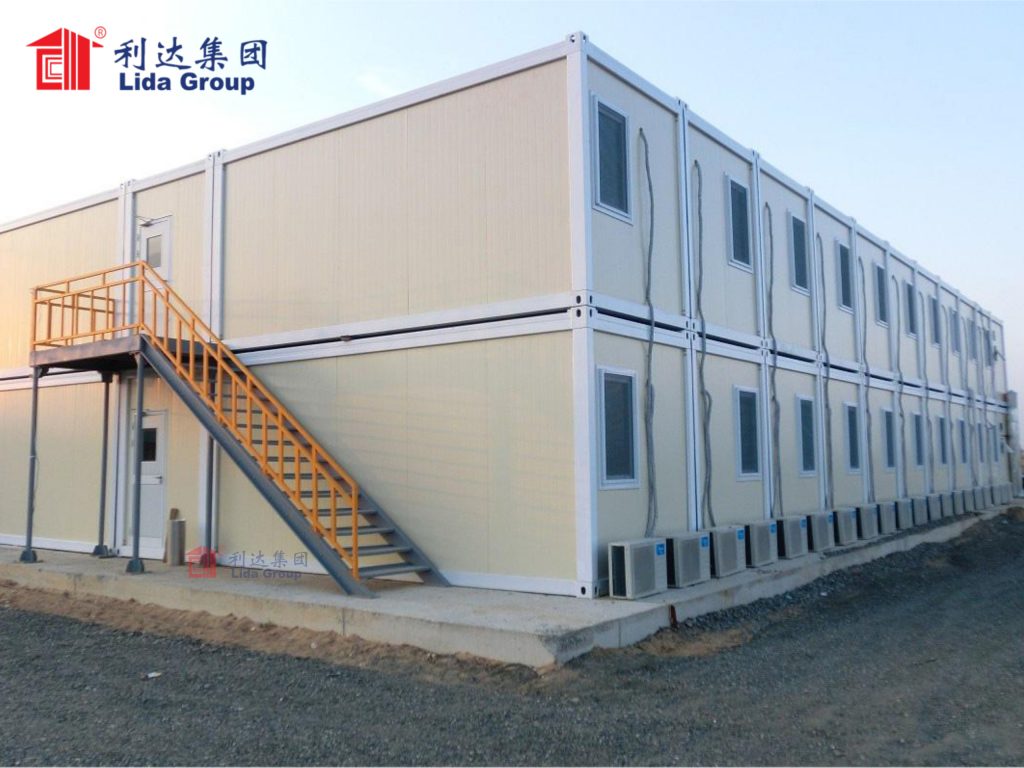
The modular container house design uses standard shipping containers that have been reinforced and customized internally to serve as livable residential units. Each container measures 40 feet long by 8 feet wide by 8.5 feet tall, providing roughly 320 square feet of interior living space. The metal exteriors of the containers give the structures strength and durability suitable for transportation and temporary housing use.
Internally, the containers are outfitted with walls, floors, windows, doors, and basic plumbing and electrical systems. The modular designs allow multiple layout configurations such as single-bedroom units or combined multi-bedroom units. Insulation is added to container walls and roofs to improve energy efficiency. Special coatings on the interiors also protect against moisture damage. Furnishings are kept basic but include beds, seating, and essential appliances.
A key advantage of the modular container house system is its standardized design approach. All units are constructed using the same container size and modular components for efficiency. This standardization allows for rapid mass production of housing units that can be quickly combined on-site. According to Lida Group, a single production facility can complete two housing units per day using an automated assembly line process.
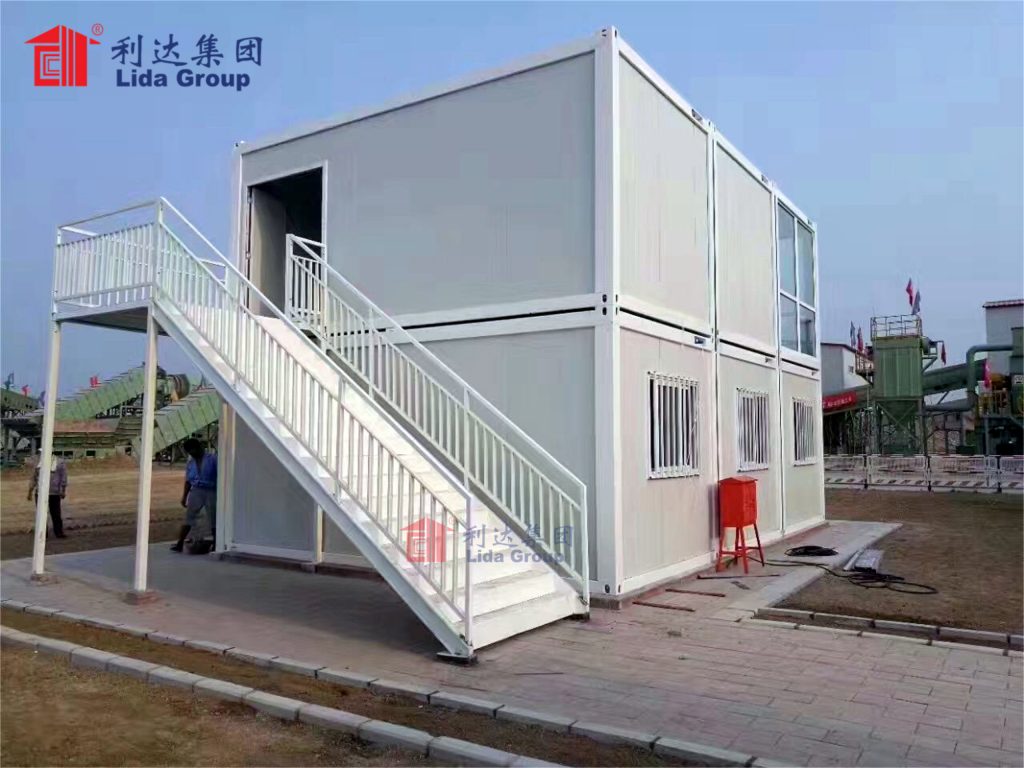
The standardized design also means entire transitional housing communities can be pre-planned, with sites graded and foundations, roads, and utility infrastructure put in place ahead of a disaster. When an event occurs, the prefabricated container housing units can then be rapidly deployed. Lida Group estimates that within 30 days of mobilization, a village of 100 modular houses could be assembled and made habitable using their system.
For transportation, the housing units are shipped flat-packed in disassembled state and stacked inside standard shipping containers. On-site, cranes and forklifts are used to remove the units from transport containers and place them on foundations. Wall panels, roofs, and interior components are then connected together using a simple panelized construction approach. Doors, windows, and utility hookups are the final installation steps to complete move-in ready homes.
Once in place, the modular container villages are designed to withstand local climate conditions and act as transitional housing for 1-3 years until permanent reconstruction can be achieved. The metal exterior of the containers provides robust protection against high winds, rain, flooding or snow loads that may be experienced in a disaster zone. Susceptibility to damage from aftershocks or additional storms is also minimized.
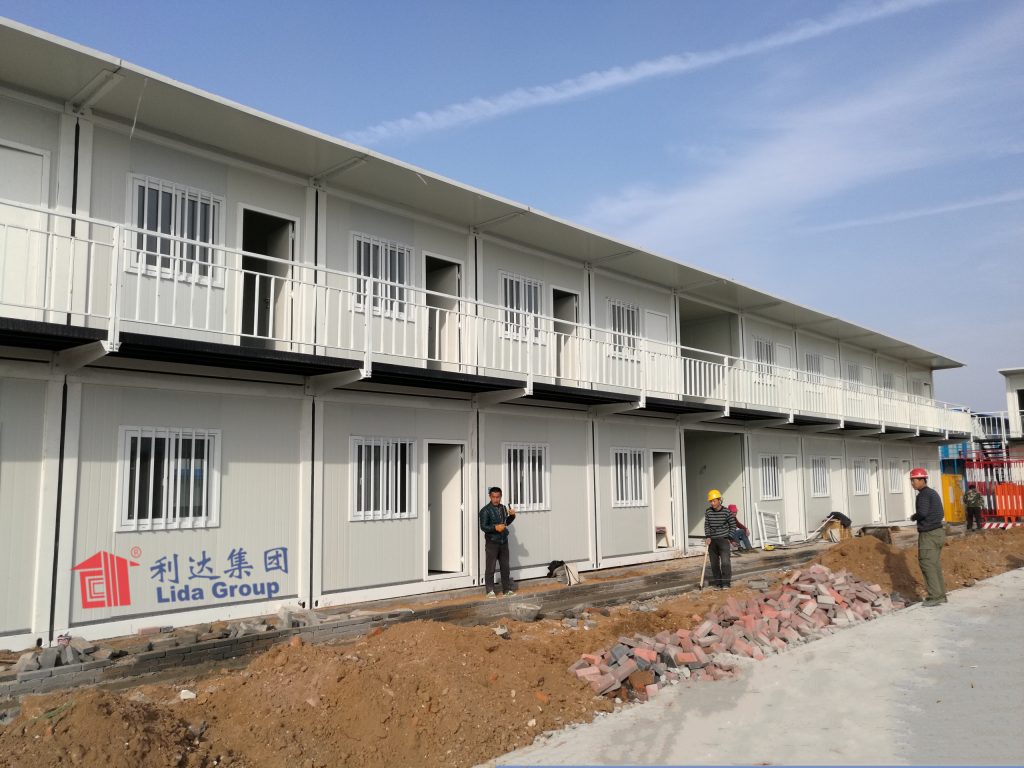
Interior comfort is maintained through insulated construction and the addition of typical residential features like HVAC systems as needed. Electrical and plumbing hookups allow for running water and appliances. Prefabricated utility connection buildings distributed throughout communities efficiently provide water, septic, and power for all homes. Communal spaces like community centers, laundromats, or temporary school/office buildings can also be included if desired.
According to Lida Group, the versatility and scalability of the modular container house system makes it suitable for deployment anywhere rapid temporary housing is needed. In addition to disaster recovery, applications could include temporary worker housing, overflow student housing, refugee camp additions, military forward operating bases, mine/oil worker accommodations, and more. The system is designed for rapid setup and future relocation, making the housing reusable if needed.
To test its design and operational capabilities, Lida Group is partnering with government agencies and non-profits involved in disaster response and housing initiatives. The first deployment will involve establishing a prototype 100-unit transitional housing community in southwest China in an area prone to seasonal flooding. Additional test sites are being scouted internationally.
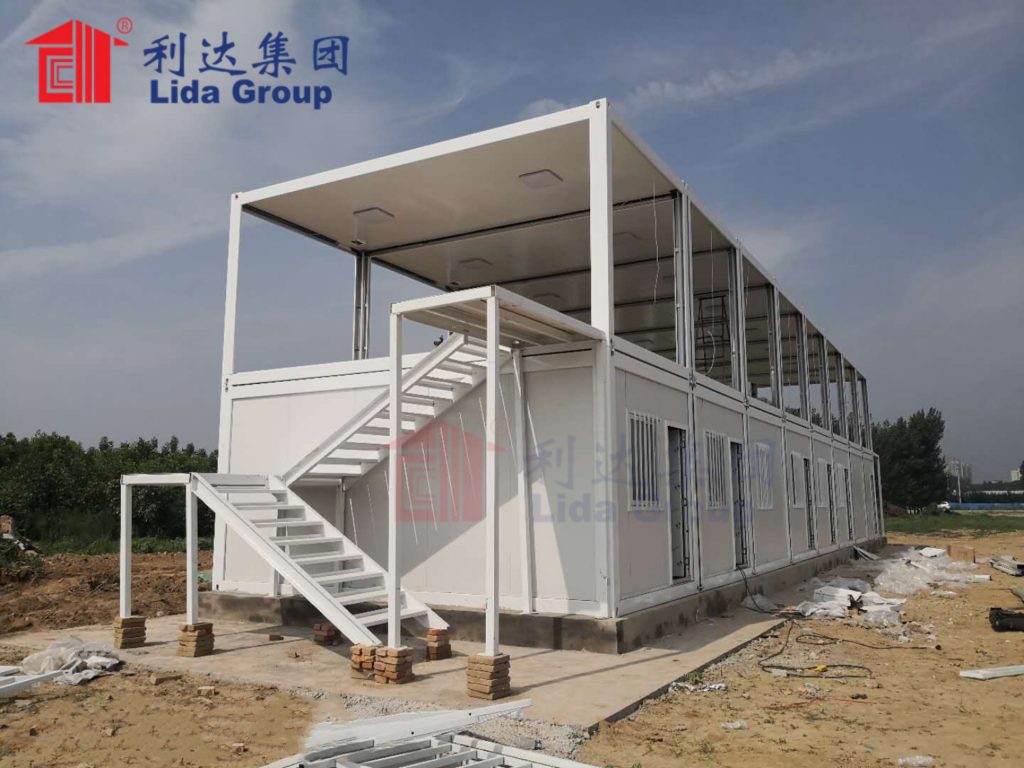
Feedback from residents living in the modular villages as well as community organizers, aid workers, and local officials will be used to continue refining details of the system. The goal is achieving refined processes that can deploy communities within 21 days or less after mobilizing to a disaster zone. Lida Group hopes their modular container house system will set a new standard for rapid temporary housing solutions globally.
By taking a standardized, modular approach suited for both mass factory production and rapid on-site assembly, the new system aims to significantly reduce the time needed for constructing temporary housing communities after disasters compared to traditional site-built construction methods. Having stable, dignified shelter in place more quickly is expected to in turn support faster recovery and return to normalcy for impacted populations. The homes are also designed for sustainability, with materials chosen to enable future relocation or redevelopment.
If initial prototype deployments prove successful, Lida Group expects demand could come from a variety of public and private sector customers. National and international government agencies overseeing disaster response and recovery operations are seen as primary customers. Private sector demand may include developers of temporary worker camps, immigrant or refugee shelters, low-cost housing projects, military bases or UN/NGO emergency response teams requiring prefabricated villages.
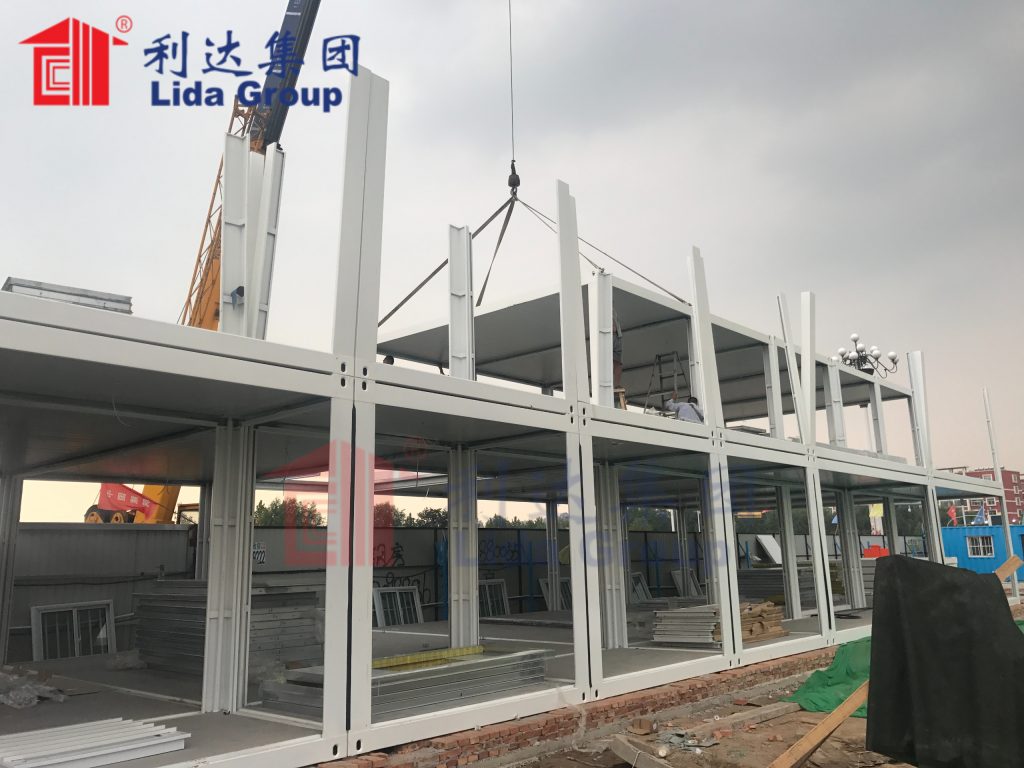
While up-front costs of the modular container housing system will be higher compared to some tent or temporary shelter options, Lida Group estimates overall costs should compare favorably to traditional site-built construction approaches when factoring in reduced construction times and overhead. The homes also aim to provide a higher quality living environment than some temporary housing methods while maintaining affordability relative to permanent housing reconstruction. As manufacturing scales up, costs per unit are projected to decrease as well.
To promote the new housing system, Lida Group plans to market directly to global humanitarian and disaster relief organizations to gain endorsements. Partnering with public agencies involved in developing standardized guidelines around temporary and transitional housing is also seen as important for establishing the system’s credibility. Conferences, trade shows, and site demonstrations of prototype villages will help spread awareness to prospective clients.
Financing arrangements are being explored to make the system accessible worldwide. One possibility could see bulk purchases of housing units financed by development banks with units stored strategically for rapid response. Lida Group may provide on-call setup services on a contracted basis. Working directly with affected communities is also part of the approach to ensure cultural sensitivity and community input helps shape designs.
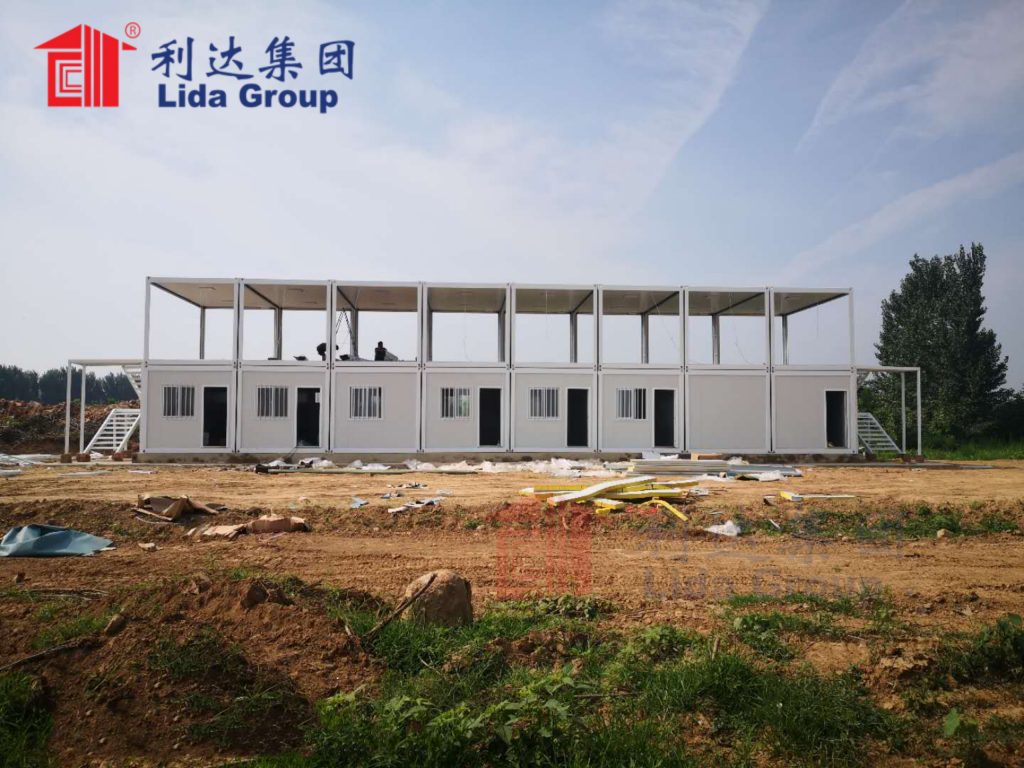
With climate change bringing more frequent and severe storm seasons, and urban populations increasingly living in high-risk disaster zones, demand for emergency shelter solutions continues growing. By embracing modular construction strategies proven in other industries, Lida Group’s new system aims to set a new standard for rapid deployment of transitional housing communities after disasters. Ensuring displaced residents can find stable shelter more quickly is at the core of the company’s vision and a key part of speeding recovery efforts around the world. If initial tests prove successful, the system has potential to reshape global approaches to temporary housing in times of crisis.

Related news
-
Researchers analyze the longevity, durability and recyclability of Lida Group's innovative structural insulated steel panel design for indoor agricultural housing facilities such as dairy barns and cheese ageing rooms.
2024-05-20 13:10:53
-
Local authorities green-light plans by Lida Group to replace aging labor camp bunkhouses with sustainable low-carbon prefabricated sandwich panel dormitory apartments for migrant farm laborers.
2024-05-15 13:35:59
-
Researchers analyze the structural performance and thermal efficiency of Lida Group's innovative prefabricated sandwich panel building system proposed for new labor dormitory complexes.
2024-05-15 11:22:29
contact us
- Tel: +86-532-88966982
- Whatsapp: +86-13793209022
- E-mail: sales@lidajituan.com


